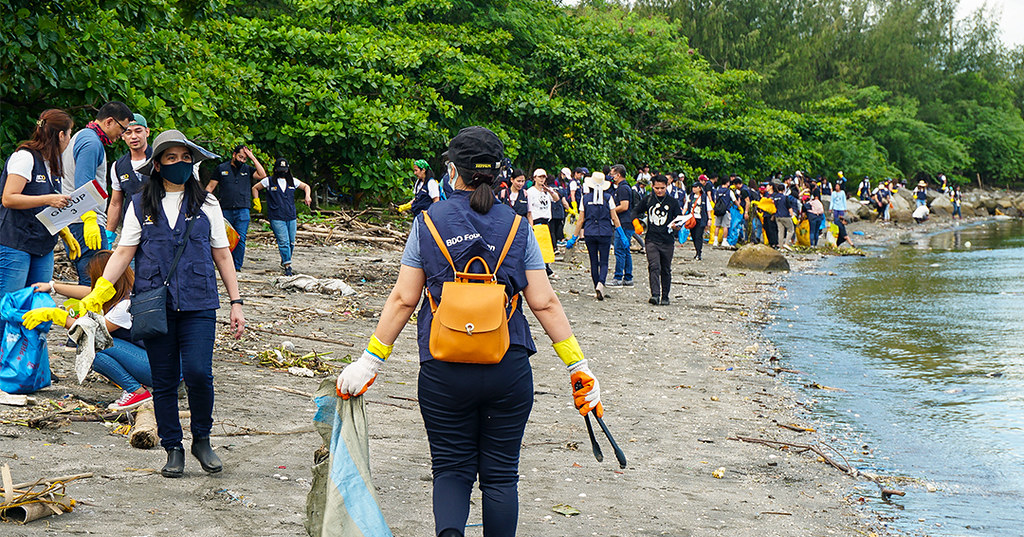New report estimates low-income countries, despite consuming less plastic, incur a total lifetime plastic cost that is 10 times higher than wealthier countries.
A WWF-commissioned report developed by Dalberg1 warns that the true cost of plastic on the environment, health and economies can be as much as 10 times higher for low-income countries, even though they consume almost three times less plastic per-capita, than high-income ones.
The report estimates that the total lifetime costs of a kilogram of plastic is around US$150 in low- and middle-income countries, which is eight times the US$19/kilogram incurred by high-income countries2. When comparing just low-income countries and their wealthier counterparts, the cost differential rises to 10 times with low-income countries hit with costs of US$200 a kilogram.
These unequal costs have substantial implications for low- and middle-income countries like Kenya, where negotiators will converge from 13-19 November for the third negotiations of the global treaty to end plastic pollution. Six years ago, Kenya took a bold step against plastic pollution by banning single-use plastic bags. Today, the country continues to struggle with illegal imports of single-use plastic bags, highlighting the problem’s transboundary nature and the crippling inequities inherent in the current plastics value chain that put countries like Kenya at a disadvantage no matter what bold action they take.
“Our take, make, waste plastics system is designed in a way that unfairly impacts our planet’s most vulnerable and disadvantaged countries. Instead of resolving the world’s plastic pollution crisis in the most efficient way, the system shifts the bulk of the costs to those least equipped to manage them, with no accountability placed on those who produce and use the products in the first place,” said Alice Ruhweza, WWF International’s Senior Director of Policy, Influence and Engagement.
“The report signals the urgency of an immediate overhaul of the current plastic system. Business-as-usual could be a death sentence, not only for a growing number of animals but also for many of our world’s vulnerable and marginalized communities as a result of increased health risks including ingestion of harmful, toxic chemicals and increased risk of flooding and disease. The global plastic pollution treaty is our chance to change this by including binding and equitable global rules on production and consumption.”
The report finds that low- and middle-income countries bear a disproportionately large burden of the costs associated with plastic pollution as a direct result of three structural inequities that reinforce the current plastics system.
The first inequity is that the system places low- and middle-income countries at a disadvantage in that they have minimal influence on which plastic products are produced and how they are designed and yet are often expected to manage these products once they reach their end-of-life. Product and system design considerations are typically made further upstream in countries with extensive plastic production and by multinational companies headquartered in high-income countries. As of 2019, only 9% of plastic waste is being recycled. Currently, around 60% of global plastic production is for single-use products, which are designed to be (and so cheaply valued that they can be) thrown away after just one use.
The second inequity is that the rate of plastic production, particularly for single-use plastic, is far outpacing the availability of technical and financial resources for waste management when it reaches its end-of-life in low- and middle-income countries. Without reducing plastic production and consumption, low- and middle-income countries will continue to bear the highest burden of plastic pollution’s direct environmental and socio-economic impacts.
The third inequity is that the system lacks a fair way for holding countries and companies to account for their action, or inaction, on plastic pollution and its impact on our health, environment, and economy (for example, through mandatory extended producer responsibility schemes in each of the countries they operate in). With no common obligations across all jurisdictions and companies for supporting a circular, just and non-toxic plastics economy, low- and middle-income countries end up paying the steeper price.
Establishing and implementing a UN global plastic pollution treaty based on harmonized and binding global rules can help us create a fairer system that empowers low- and middle-income countries and prioritizes the most effective and efficient solutions. An example of such a rule would be regulating the most high-risk plastic products, polymers and chemicals – those that can cause the most harm or are most likely to cause pollution – so that we can lessen the strain on countries, especially those with fewer resources, in managing plastic waste. Similarly, the opportunity to create global product design rules can help to ensure that products are designed to be reused and/or recycled regardless of which country they are produced or used in.
In November, countries will join the third of five negotiating sessions on a global treaty to end plastic pollution3. WWF calls on all governments to agree on a treaty that includes:
● Banning, phasing out or phasing down high-risk and avoidable plastic products, polymers and chemicals of concern.
● Global requirements for product design and systems that can secure a safe and non-toxic circular economy, which prioritizes reuse and improvements in recycling.
● Robust measures for supporting considered and effective implementation that includes sufficient financial support and alignment of public and private financial flows, particularly for low- and middle-income countries.
“Many of the options included in the treaty’s first draft have substantially weaker language and less specific obligations, making it tempting for governments to revert to old bad habits of relying on national or voluntary action rather than creating common regulations. But our report has shown that relying on individual government decisions results in an unfair system where burdens are not only unequally distributed, they are borne by those least equipped to remedy them,” said Eirik Lindebjerg, WWF International’s Plastics Policy Lead.
“Compromising on a treaty mainly based on national action will just take us back to where we were – divided and unable to stem the onslaught of plastic pollution. We can no longer act as if plastic is a cheap throwaway commodity. It has huge costs for some of the most vulnerable communities who have no power to change the system. Inaction will result in a higher cost for all of us. Countries must dial up ambition and finalize a treaty with harmonized and binding global rules if we are to achieve an equitable plastic value chain and want a future free from plastic pollution.”












